Single cell epigenomics
Nathan Sheffield, PhD

What is epigenomics?
Epigenomics is the study of the physical modifications, associations and conformations of genomic DNA sequences (Schwartzman and Tanay 2015)
Epigenomics is the study of the chemical modification and physical conformation of cellular DNA and bound proteins
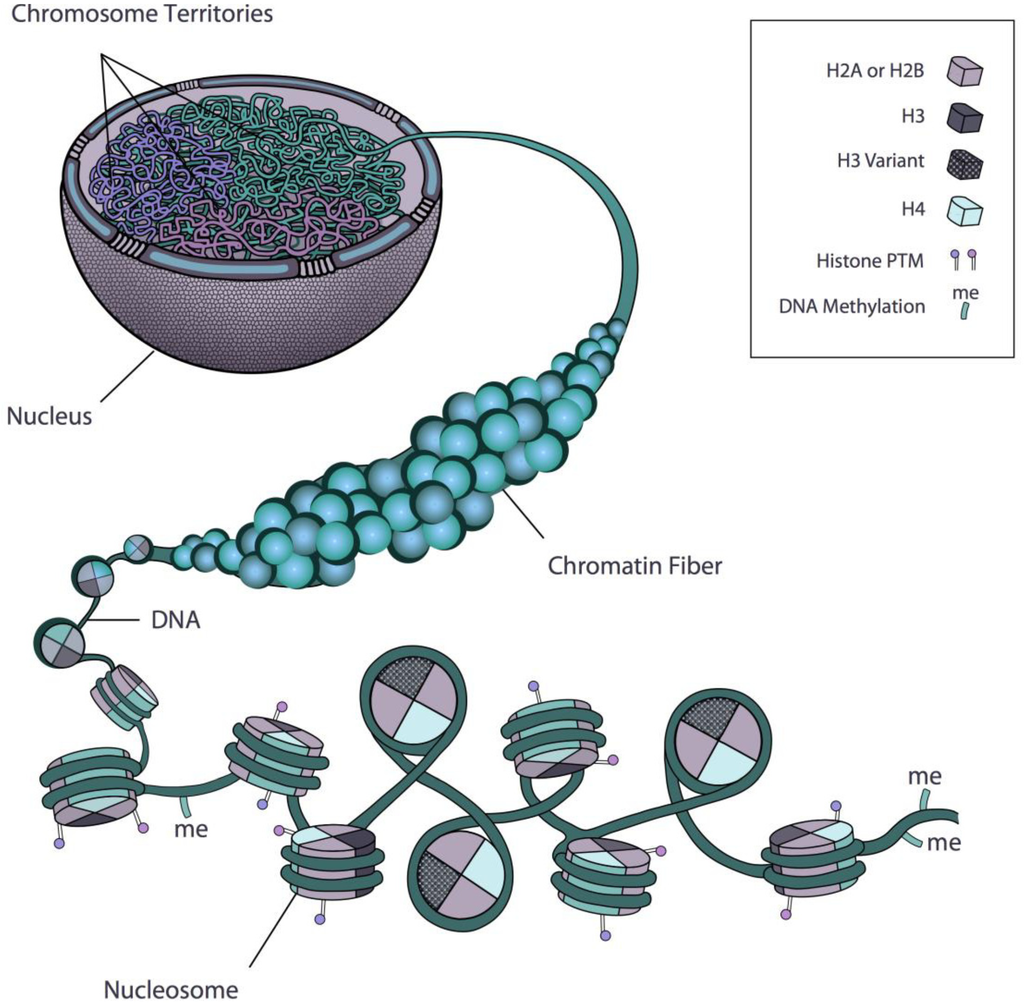
Rosa and Shaw 2013
The epigenome

If we can measure how DNA is packaged,
we can understand what a cell is doing
Epigenomics
the study of the chemical modification and physical conformation of cellular DNA and bound proteinsEpigenetics
???What is epigenetics?
the causal study of embryological development (Waddington 1957, The strategy of the genes)
The study of mitotically and/or meiotically heritable changes in gene function that cannot be explained by changes in DNA sequence
(Riggs et al. 1996)
(Riggs et al. 1996)
a change in the state of expression of a gene that does not involve a mutation, but that is nevertheless inherited in the absence of the signal (or event) that initiated the change. (Ptashne and Gant 2002)
What is epigenetics?
the structural adaptation of chromosomal regions so as to register, signal or perpetuate altered activity states. (Bird 2007)
Epigenetics refers to changes in gene regulation brought about through modifications to the DNA's packaging proteins or the DNA molecules themselves without changing the underlying sequence.
(Lord and Cruchaga 2014, Nature Neuroscience)
(Lord and Cruchaga 2014, Nature Neuroscience)
the study of the mechanisms that allow cells to translate the nearly constant genome content of a multicellular organism into multiple functional and stable cellular conditions (Schwartzman and Tanay 2015)
What is epigenetics?
The word literally means "on top of genetics," and it's the study of how individual genes can be activated or deactivated by life experiences. (The Week, 2013)
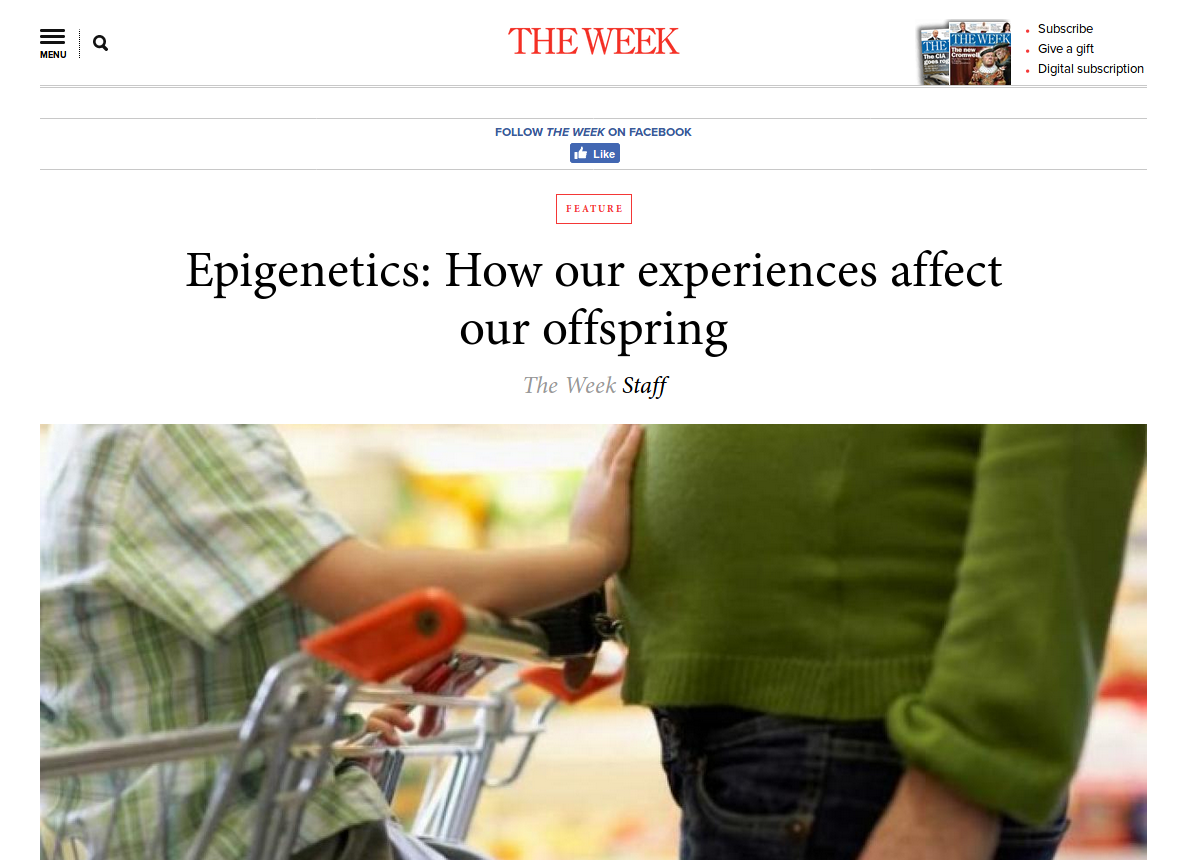
Epigenomics
the study of the chemical modification and physical conformation of cellular DNA and bound proteinsEpigenetics
???
Bulk to single-cell: applications
- Rare populations
- Cell-to-cell heterogeneity (cancer, iPSCs, brain)
- Principles of gene regulation
- Surveillance
Single-cell challenges
- Sparsity
- Minimal input DNA
- Loss of already minimal material (e.g. BS, ChIP)
- Data from a single cell is sparse
- Number of cells assayable is low
- Noise (background or cross-contamination)
- Doublets or nulls
- Alleles
- To measure is to destroy
Overcoming challenges
Technology/equipmentMolecular techniques
Computation
Methods of focus
- Bisulfite-seq: DNA methylation
- ATAC-seq: Open chromatin
- ChIP-seq: Histone modification
- Hi-C: 3D DNA looping
Overcoming challenges
Technology/equipmentMolecular techniques
Computation
Mouth pipetting (Bisulfite-seq)
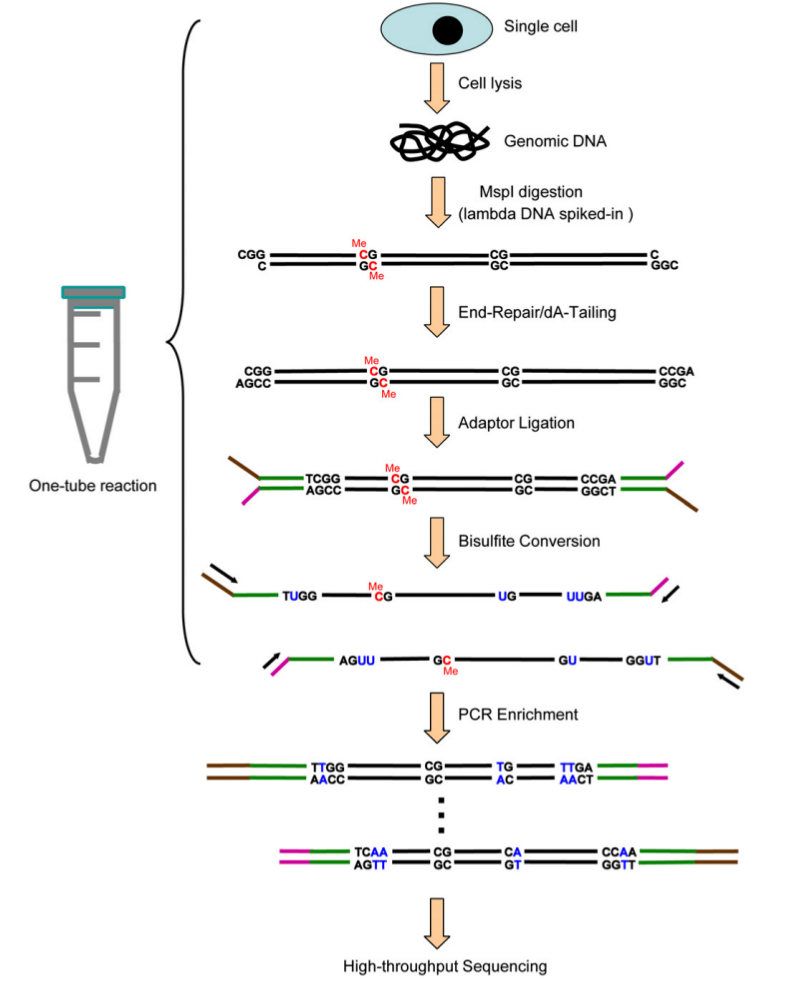
Guo et al. 2013
FACS (Bisulfite-seq)
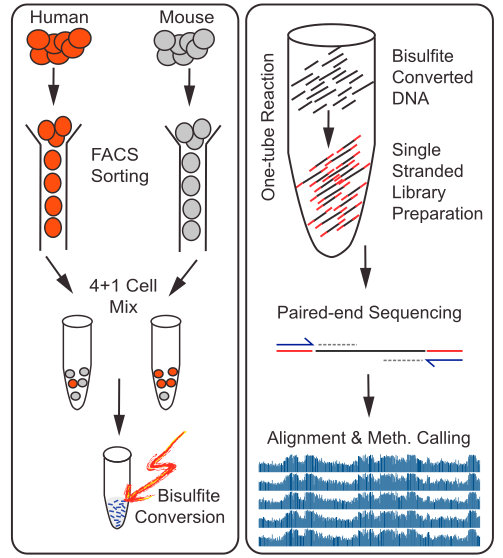
Farlik et al. 2015
Microfluidics (ATAC-seq)
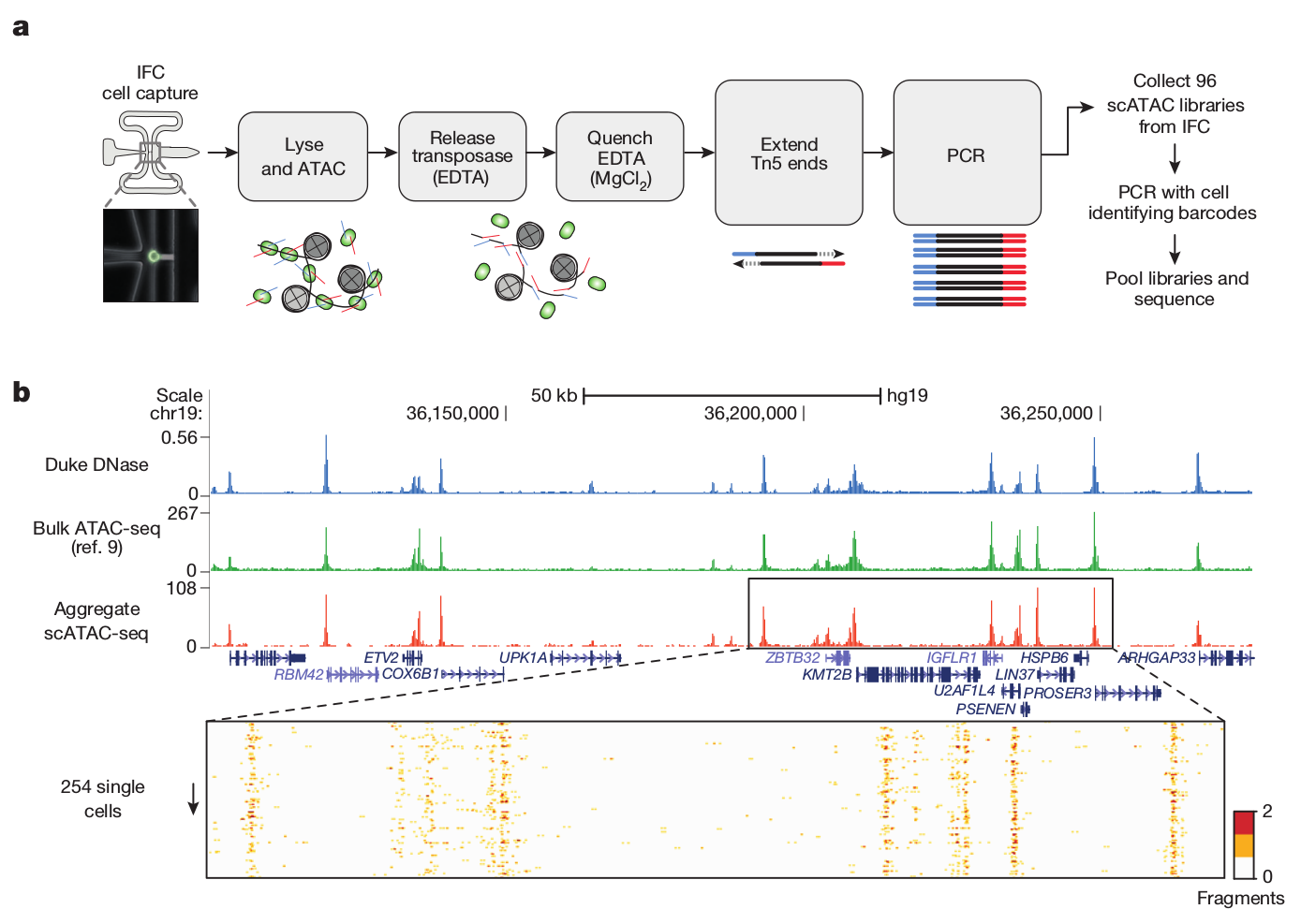
Buenrostro et al. 2015
Droplets
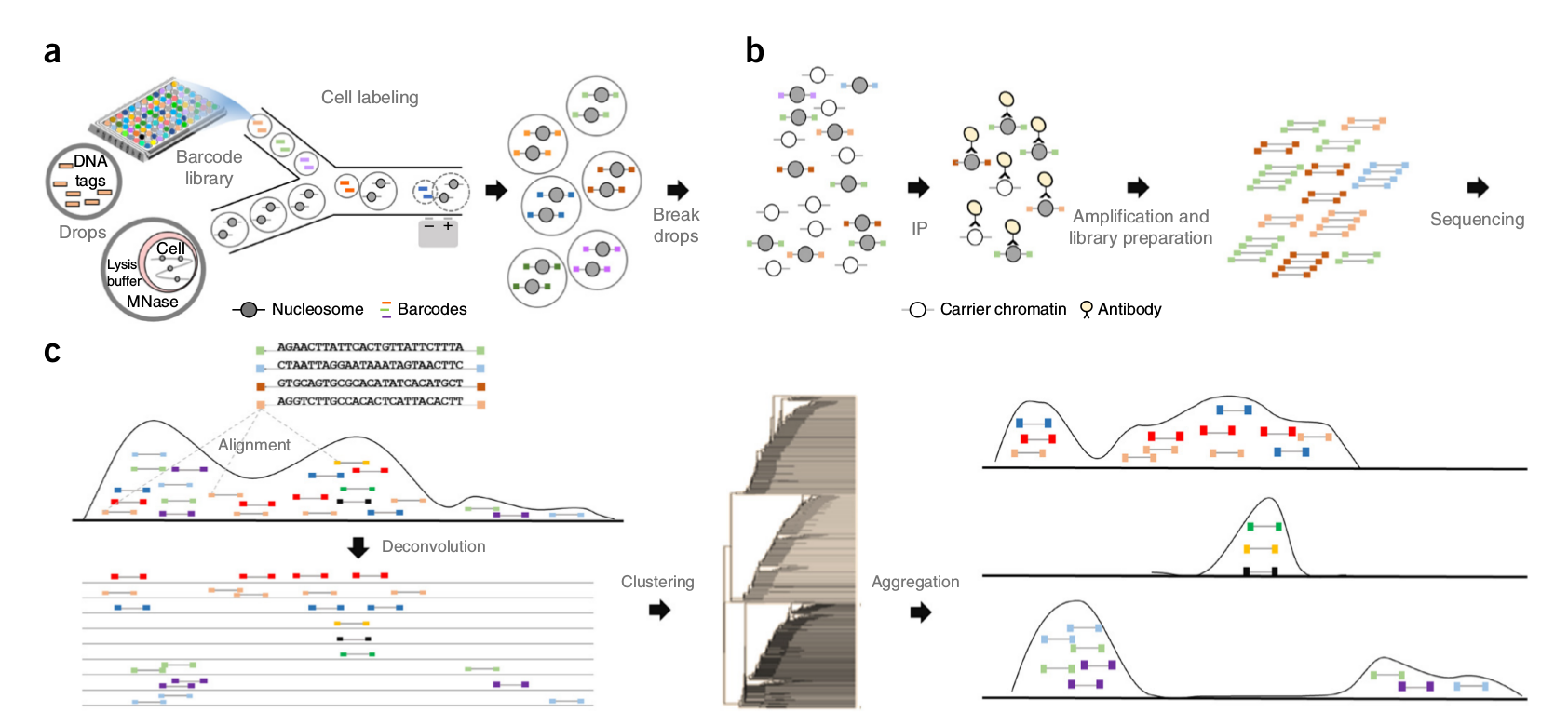
Rotem et al. 2015
Overcoming challenges
Technology/equipmentMolecular techniques
Computation
Post-bisulfite adapter tagging
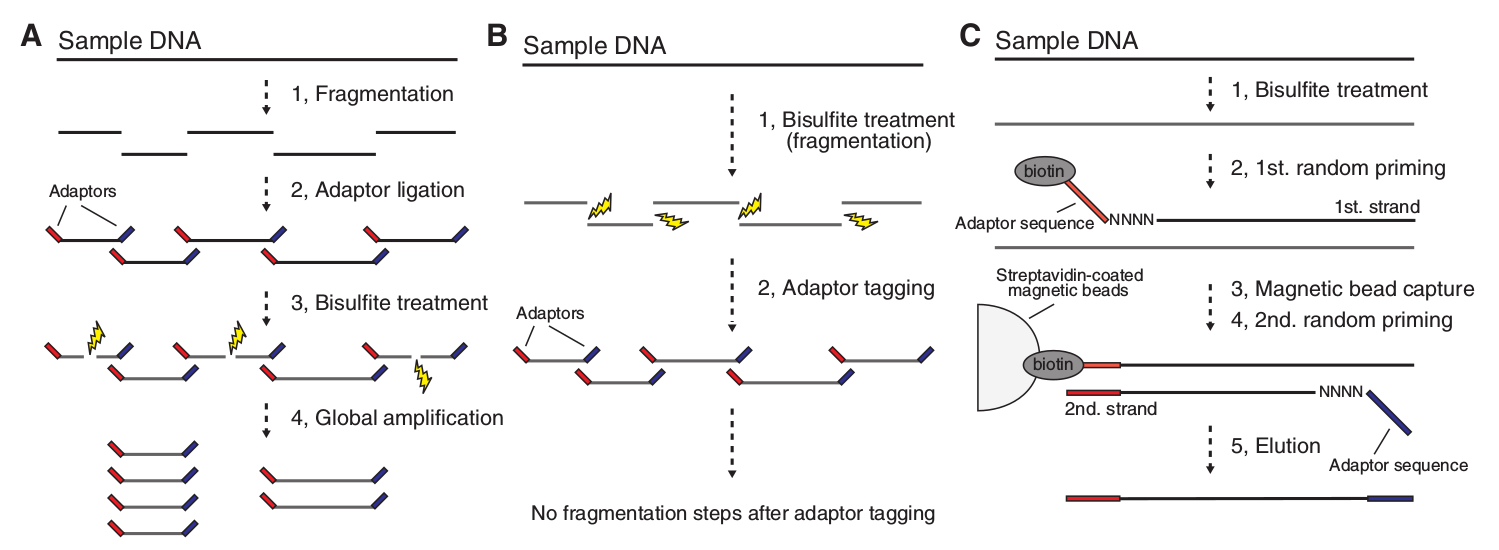
Miura et al. 2012
Single-strand protocols
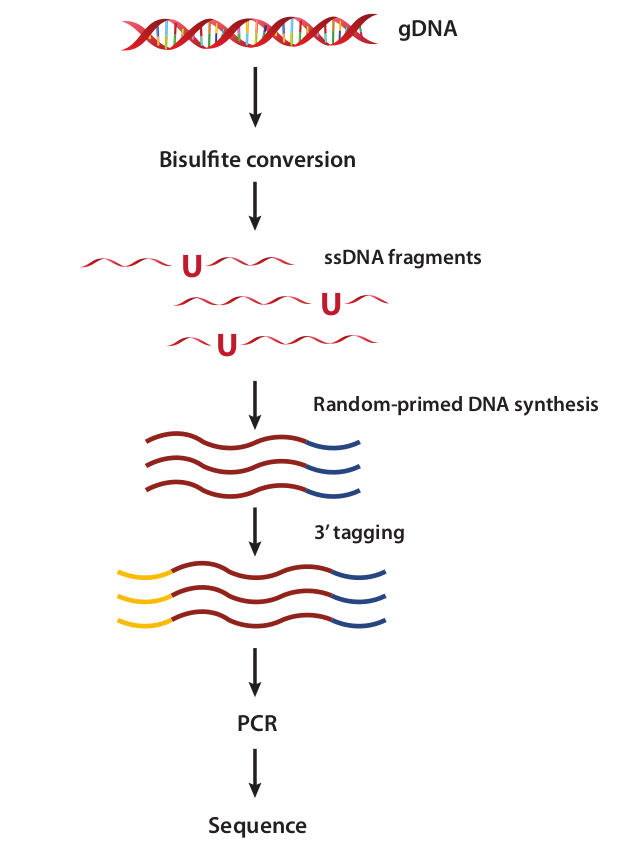
Khanna et al. 2013
Combinatorial indexing
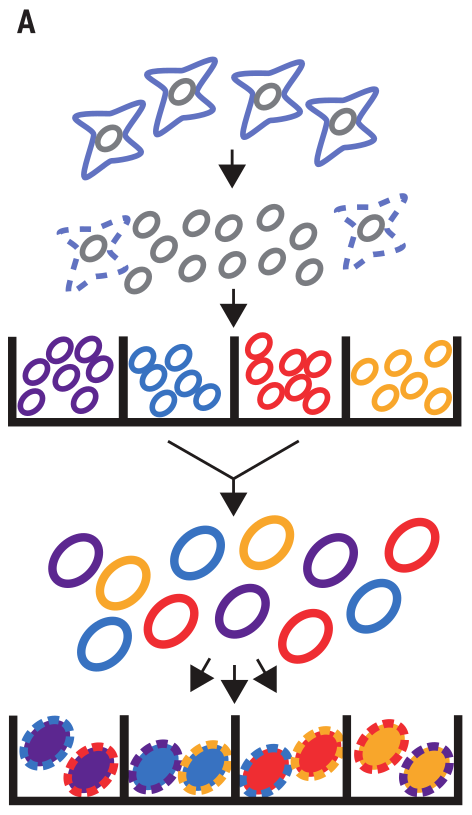
Cusanovich et al. 2015
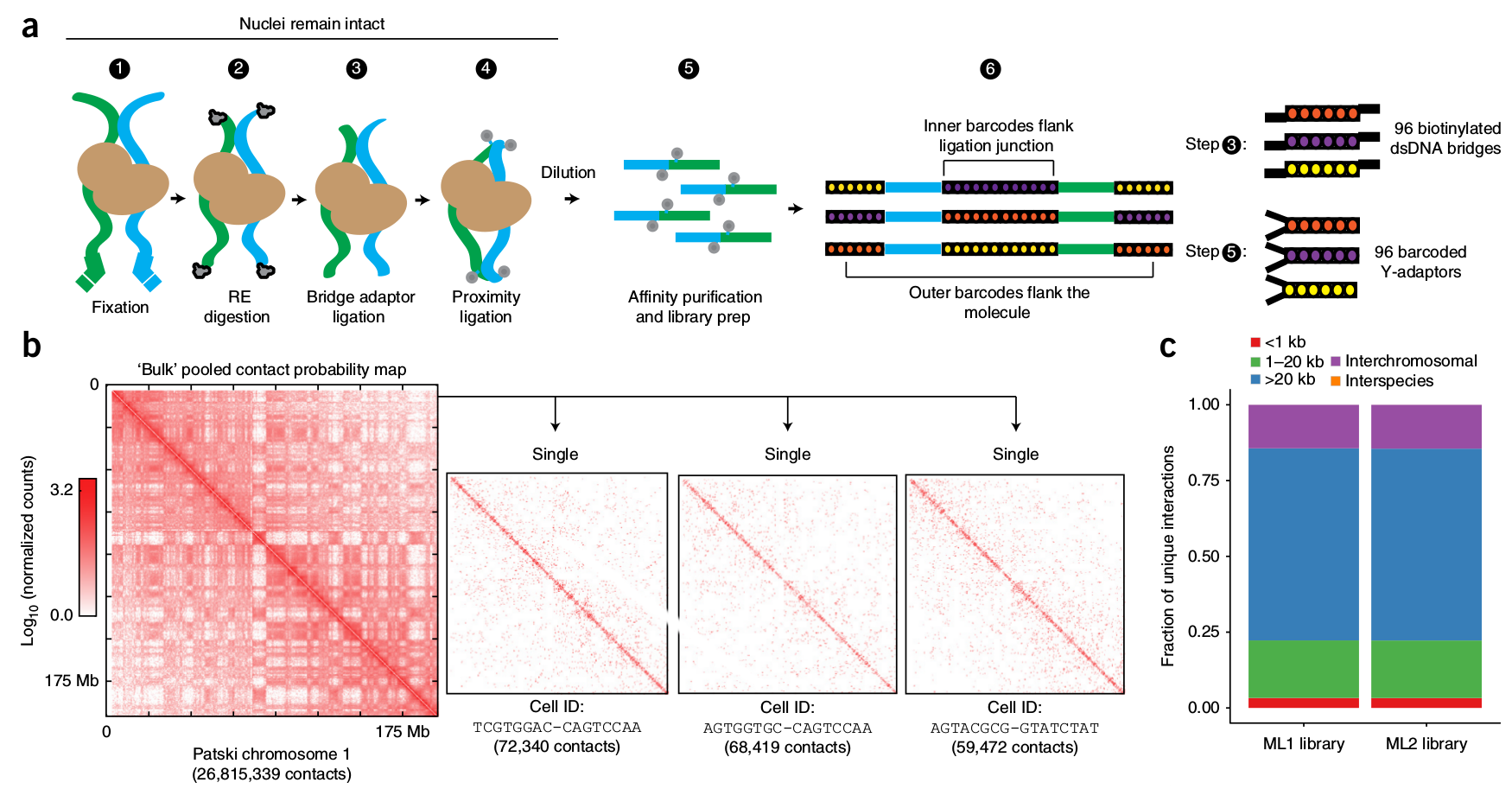
Ramani et al. 2017
Tn5 transposase fragmentation
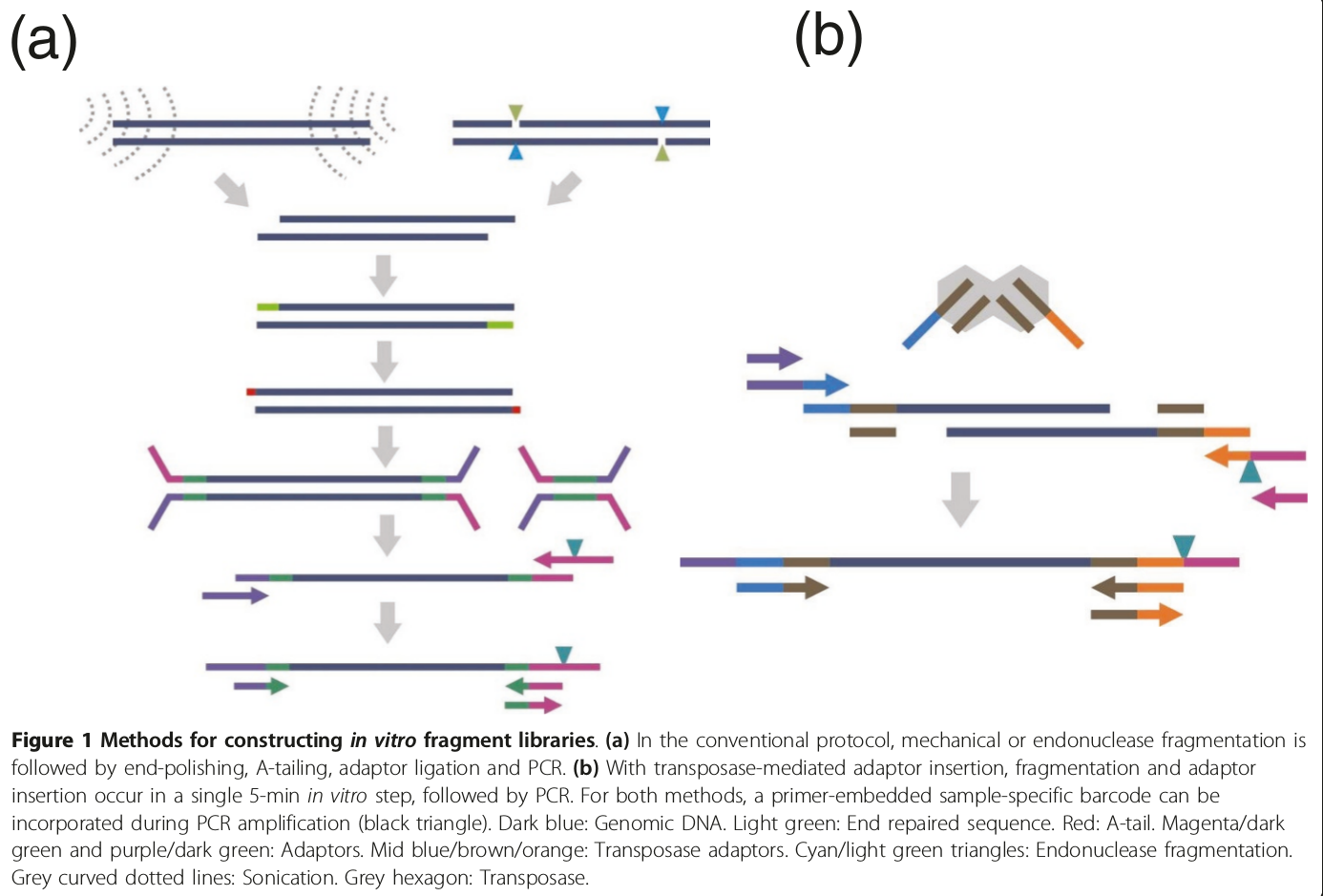
Adey et al. 2010
Technology tradeoffs

Overcoming challenges
Technology/equipmentMolecular techniques
Computation
Contextualizing

Buenrostro et al. 2017
Pooling or imputing

Trajectories
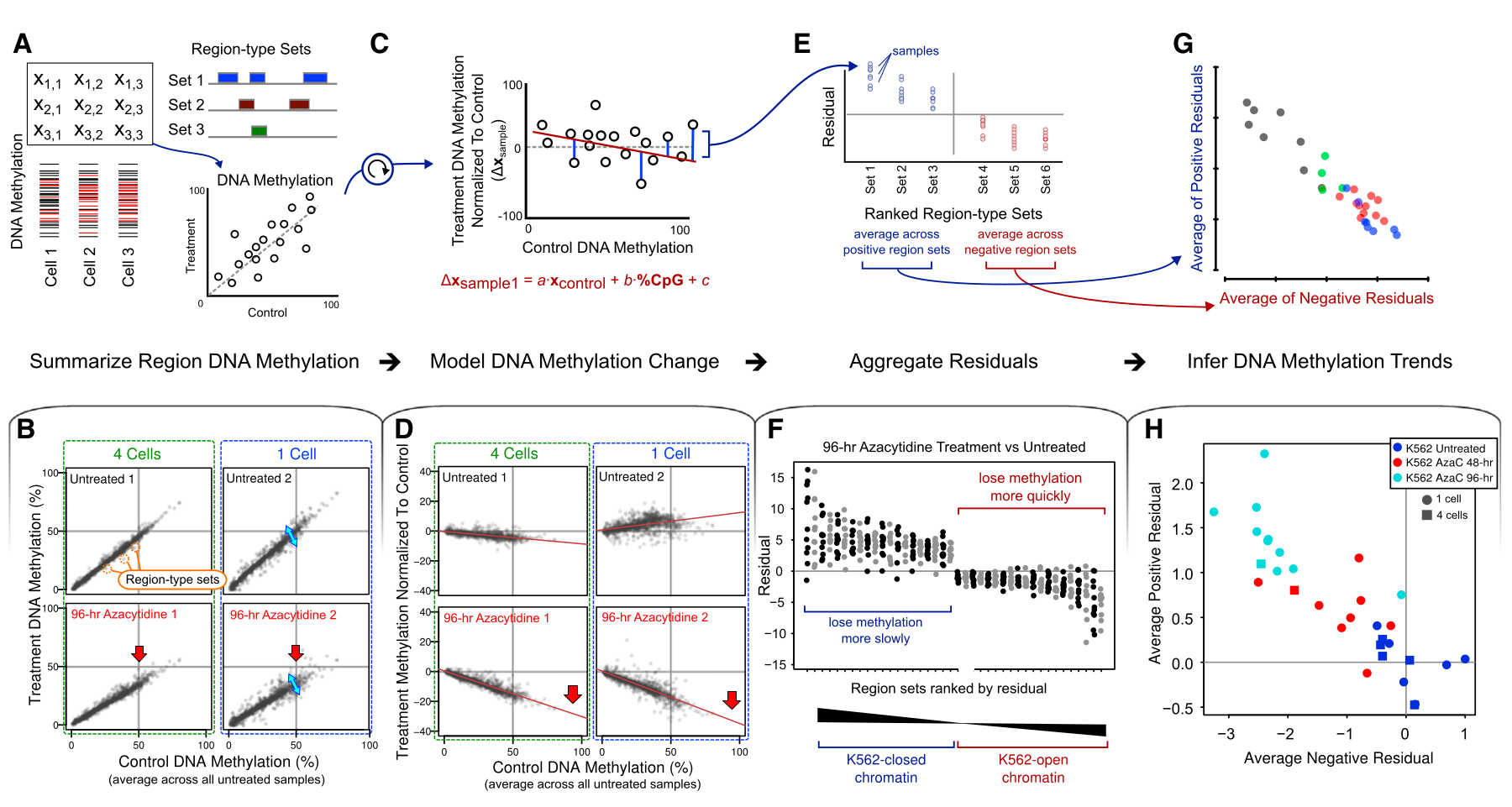
Farlik et al. 2015
One read, many readouts
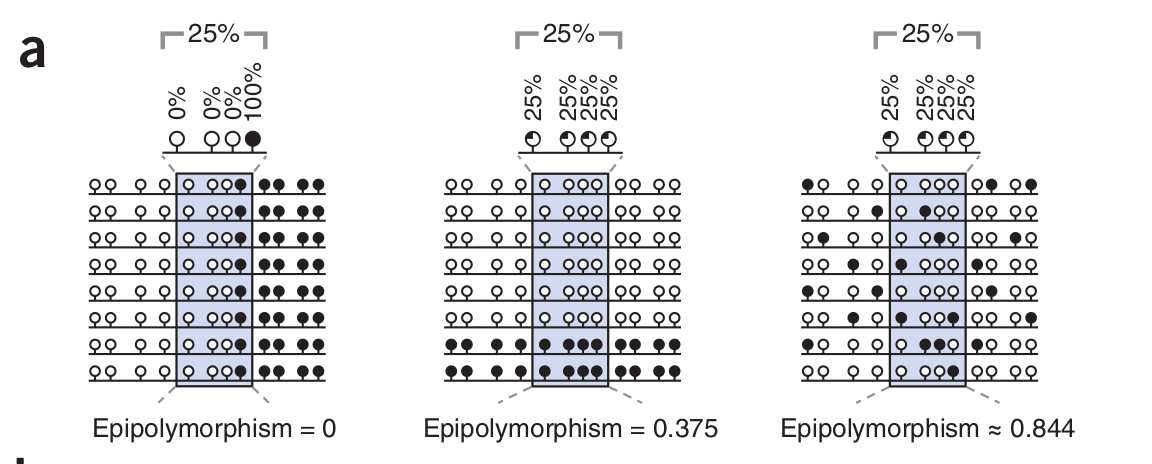
Landan et al. 2012
Single-cell multi-omics
Stategies for single-cell multi-omics

Bock et al. 2016
G&T-seq
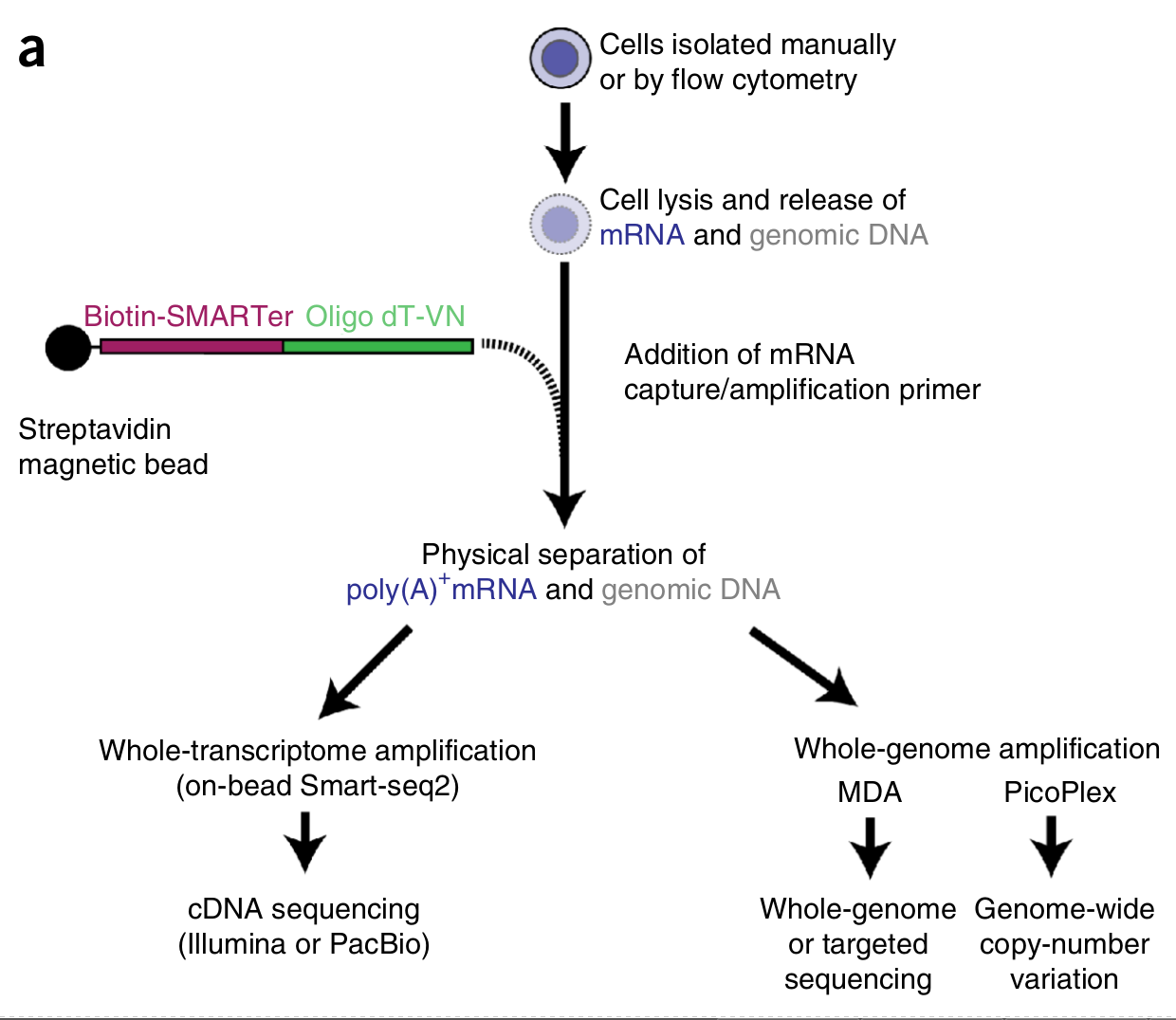
Macaulay et al. 2015
DR-seq

Dey et al. 2015
RNA + bisulfite-seq
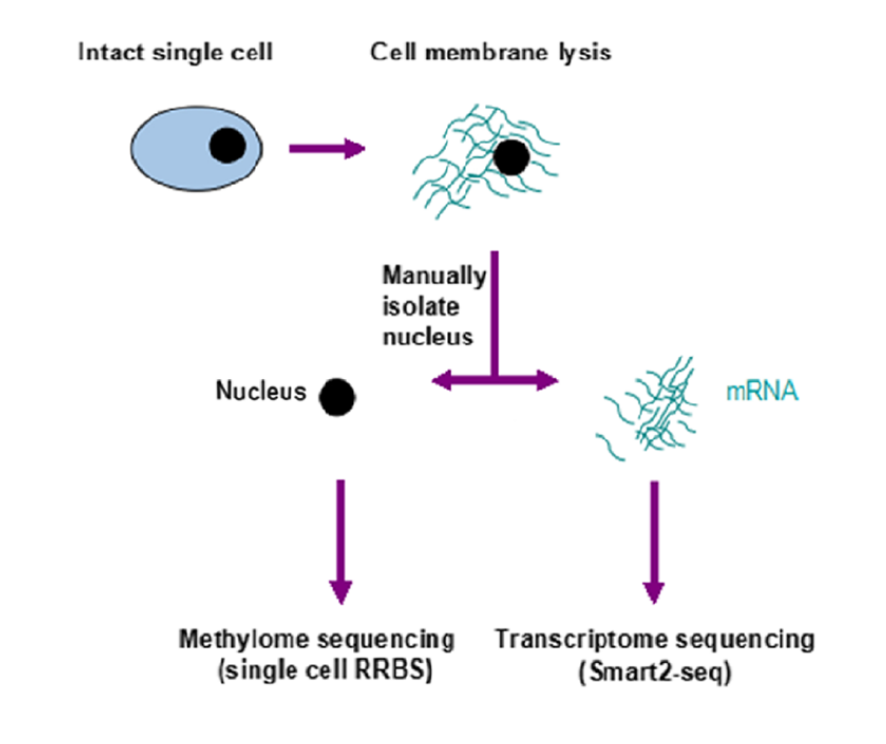
Hu et al. 2016
Slides at http://databio.org/slides/single_cell_epigenomics.html
List of relevant literature: databio.org/single_cell_epigenomics.html